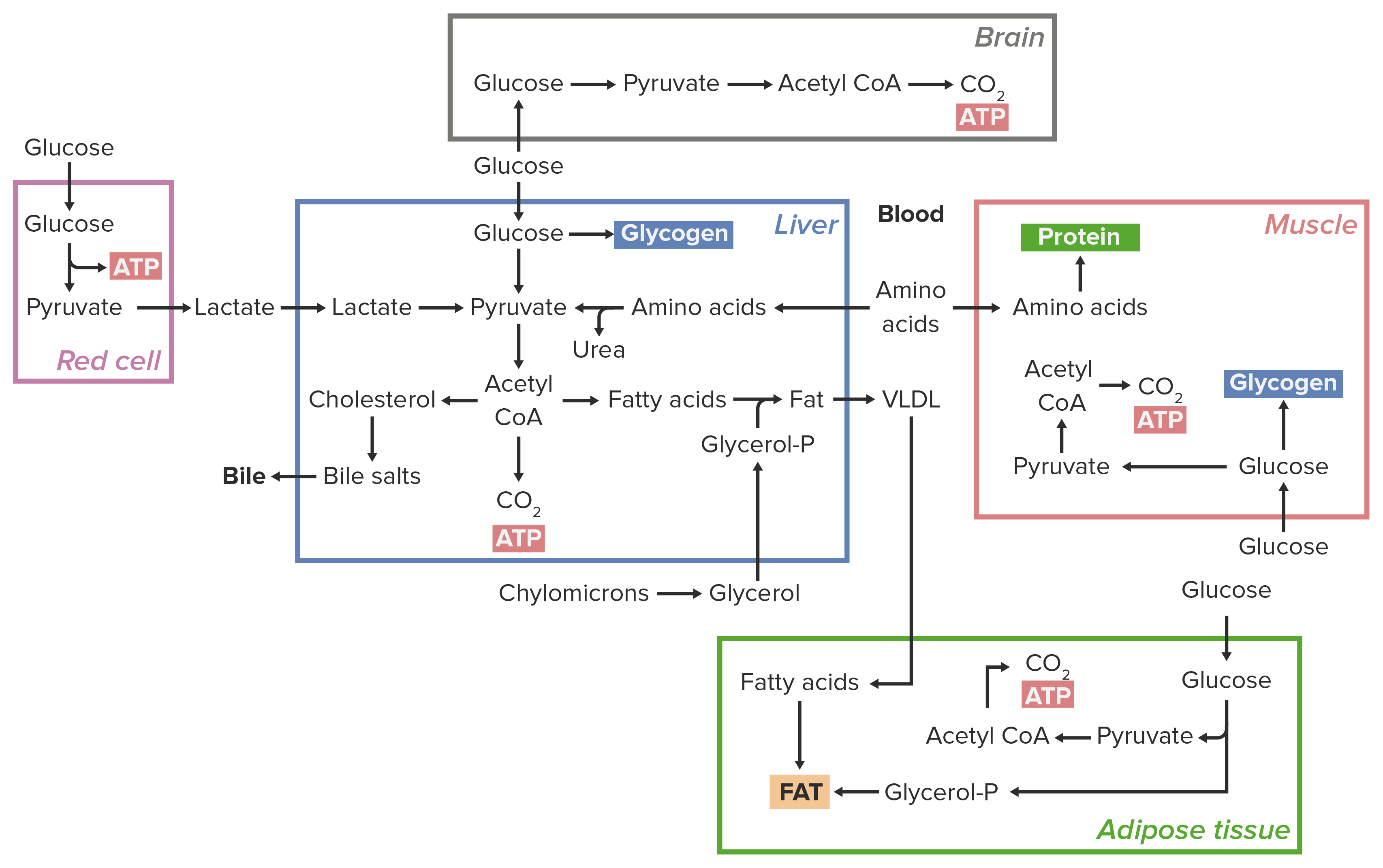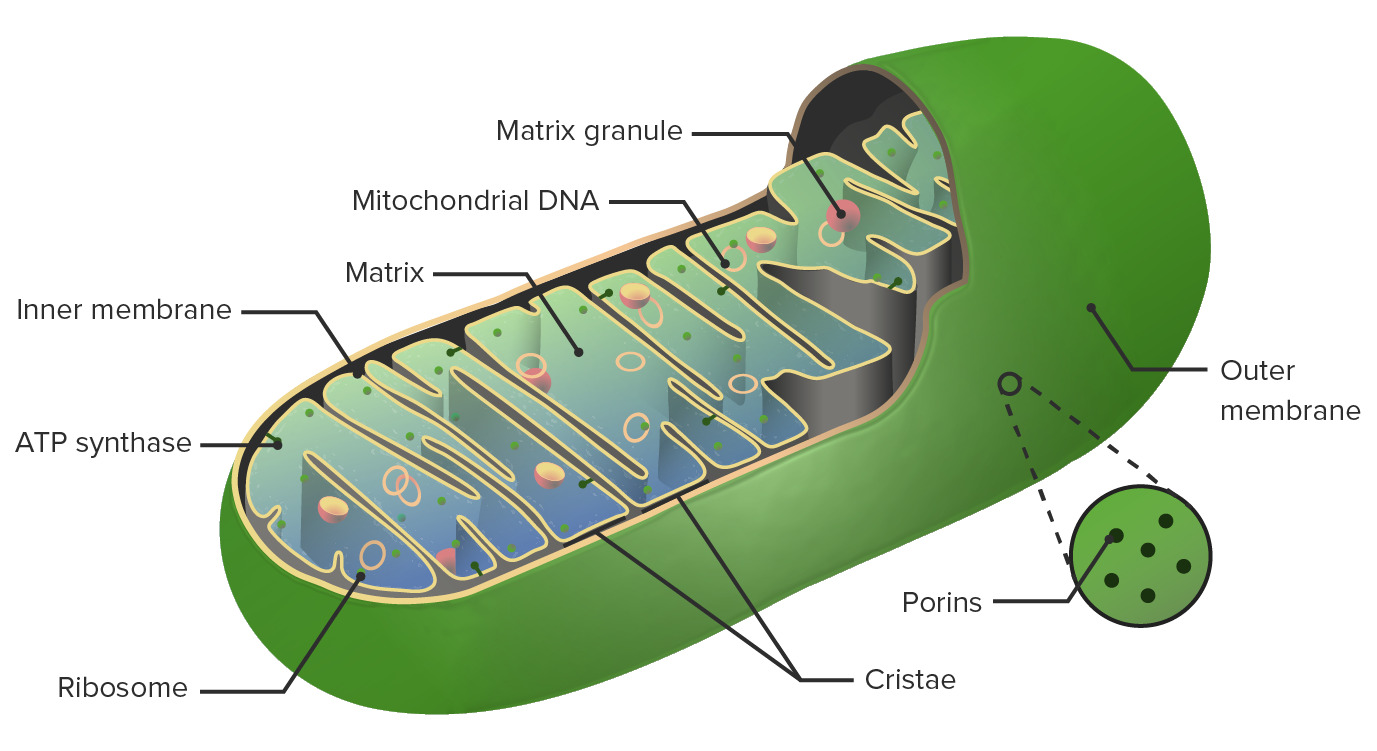Playlist
Show Playlist
Hide Playlist
ATP Synthase
-
Slides 17 KrebsETCChemiosmosis CellBiology.pdf
-
Reference List Molecular and Cell Biology.pdf
-
Download Lecture Overview
00:00 Here we are. We are at the staircase. The girls have gone down and in. They are on the inside in the mitochondrial matrix. And we have lots of boys hydrogen ions outside and they are angry. 00:12 They are looking for a way back in. They are wondering around in the alley all upset and they find ATP synthase, which is a revolving door. So this door will spin as they rush through it and because they are coming back in with so much energy, to meet up with their electrons, the door spins really really fast. 00:32 And its that spinning of the door that allows phosphorylation of ADP into ATP. 00:39 So hydrogen ions rush through the ATP synthase. It causes it to spin which is realistically what happens. 00:46 There are lots of different subunits on this protein that will spin around. 00:51 And it's the energy of them spinning around that allows ATP to be formed from ADP and inorganic phosphates that are floating around. So to put this all together, let's see we have our electron transport chain, electrons have bumped down from one molecule to the other. Hydrogen ions have been shot out into the back alley or the intermembrane space. Oxygen picked up the electrons and now it really needs to be balanced by picking up some hydrogens. So we have 2H per 1/2 O2 which is per oxygen. And we form an H20. 01:33 So, in this case we have oxidative phosphorylation driven by electron acceptor. Oxygen pulling electrons down stairs. 01:45 And we also have chemiosmosis because hydrogen ions were forced out into the intermembrane space and rushed back through the ATP synthase in order to generate our ATP. So, you can see where the carbons have been made in the whole process or where the carbons left the process. 02:08 You can see what happened with all the electron transporters or all the taxis. 02:12 And you can see how much ATP is being made. So as we look at the equation for cellular respiration, you can now see that we have carbon dioxide being evolved. You know where each of those carbons come from. You had 2 coming out in pyruvate oxidation. And the other 4, coming out during the Krebs cycle. 02:34 You can now see that we have water manufactured at the very end of the electron transport chain and chemiosmosis. 02:42 And as a result of all of that, we have tons of ATP made. Now, a lot of ATP is captured but naturally we're going to lose some as heat
About the Lecture
The lecture ATP Synthase by Georgina Cornwall, PhD is from the course Energy, Enzymes and Metabolism.
Included Quiz Questions
What drives the chemiosmotic generation of ATP?
- The difference in H+ concentration on the two sides of the inner mitochondrial membrane
- The transfer of phosphate through the plasma membrane
- Osmosis of macromolecules
- Large quantities of ADP
- Lactate production
Which of the following is the CORRECT equation for the breakdown of glucose via aerobic respiration?
- C6H12O6 + 6O2 → 6CO2 + 6H2O + energy (heat + ATP)
- C6H12O6 + 6O2 → 6CO2 + 6NADH + 3FADH2 + heat
- C6H12O6 + 6O2 → 6CO2 + 12NADH + heat
- C6H12O6 + 6O2 → CO2 + H2O + energy (ATP + NADH + FADH2)
- C6H12O6 + 6CO2 → 6O2 + 6NADH + 3FADH2 + 6H2O
Customer reviews
5,0 of 5 stars
| 5 Stars |
|
3 |
| 4 Stars |
|
0 |
| 3 Stars |
|
0 |
| 2 Stars |
|
0 |
| 1 Star |
|
0 |
The video by Lecturio provides an excellent overview of the electron transport chain and chemiosmosis, two of the most important metabolic processes in the cell. These processes work together to produce ATP, the cell's energy currency. One of the most interesting things about the electron transport chain is that it is a highly efficient way to convert energy from food into ATP. The chain uses the energy from NADH and FADH2, two electron carriers that are produced during glycolysis and the Krebs cycle, to pump protons across the inner mitochondrial membrane. This creates a proton gradient, which is like a dam holding back a reservoir of energy. The ATP synthase enzyme then uses the energy of the proton gradient to drive the synthesis of ATP from ADP and inorganic phosphate. This process is called chemiosmosis. The video does a great job of explaining the complex steps of the electron transport chain and chemiosmosis in a clear and concise way. It also provides helpful animations and diagrams that illustrate the process.
Awesome analogy great lecture! Very nice lectures overall I really enjoyed them. even though I have taught this topics and I know them fairly well. I enjoy little gems of information I received through these lectures, and new understanding
Easy to understand and very complete. Thank you for your time, helped me a lot





